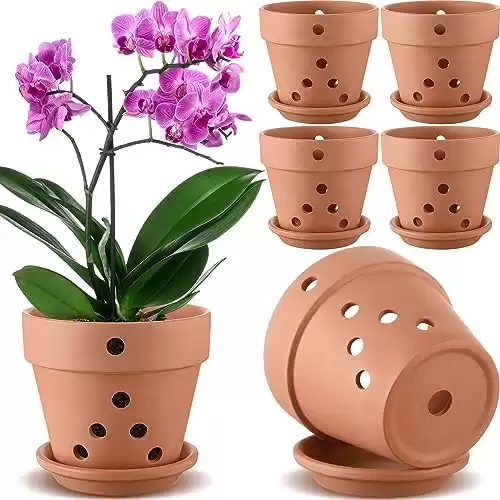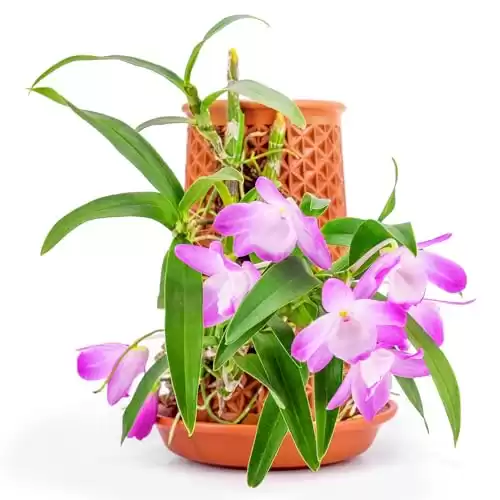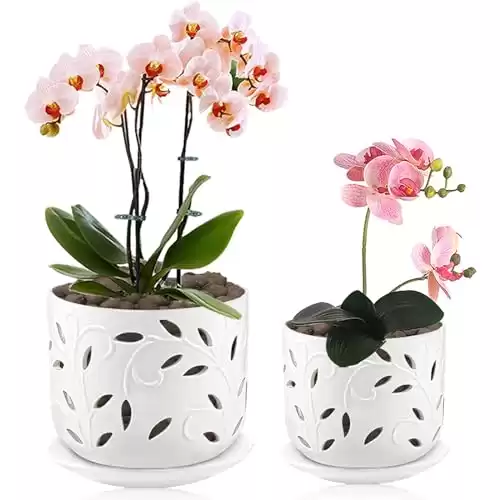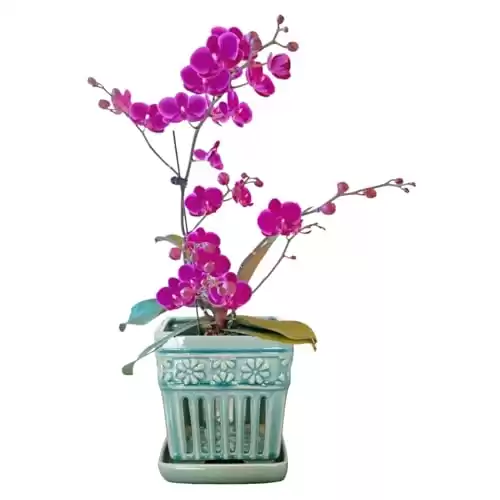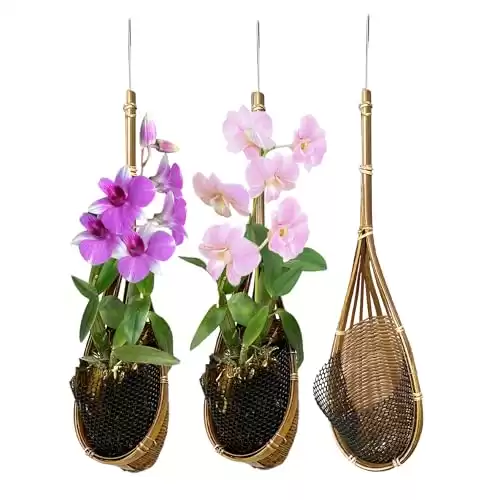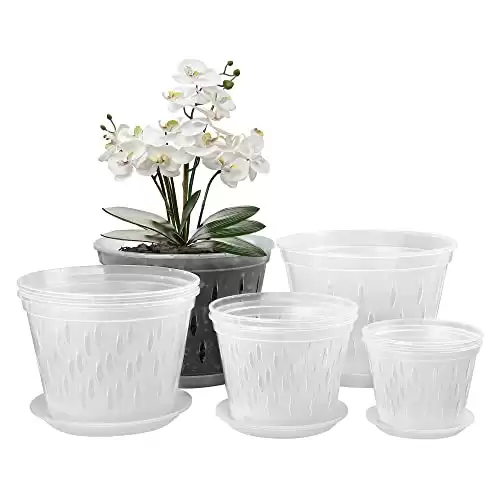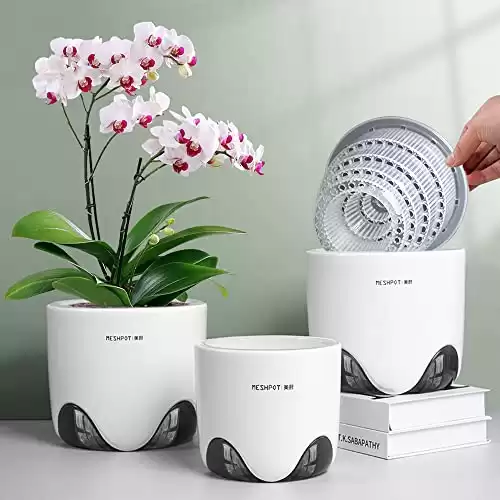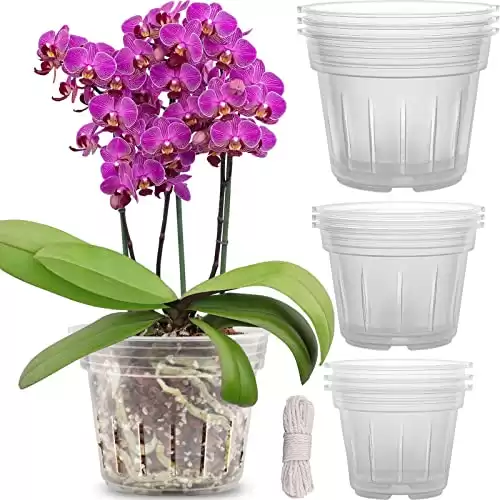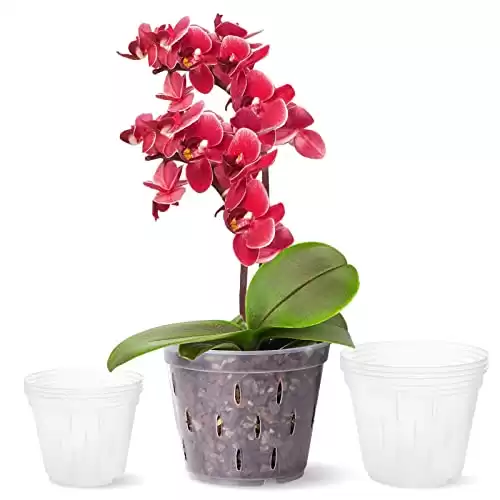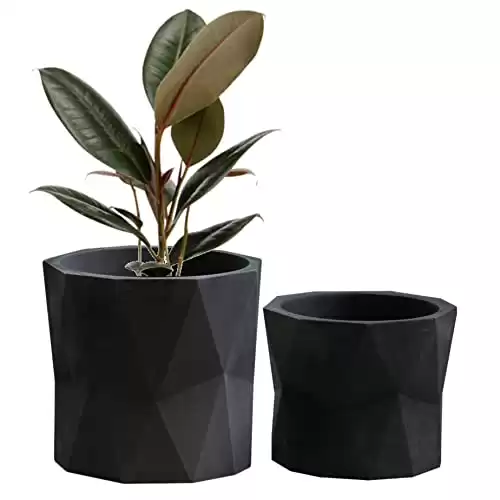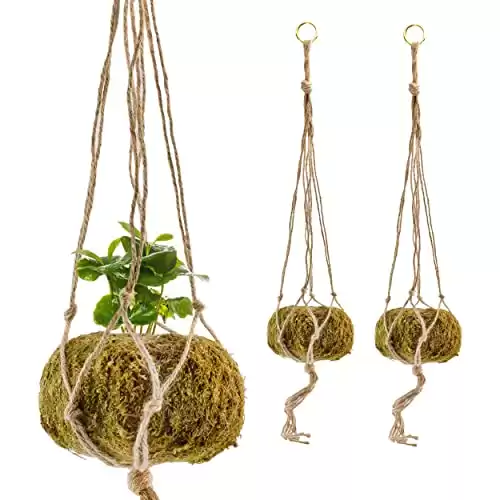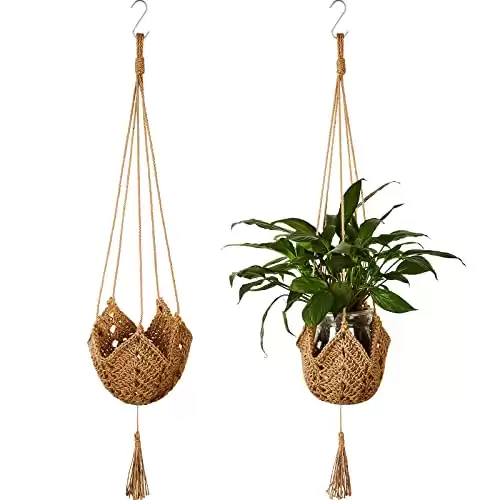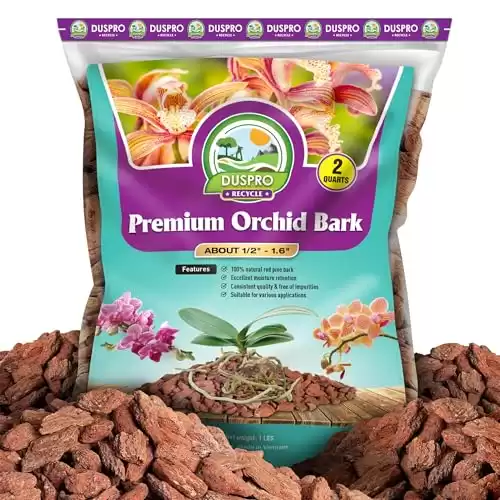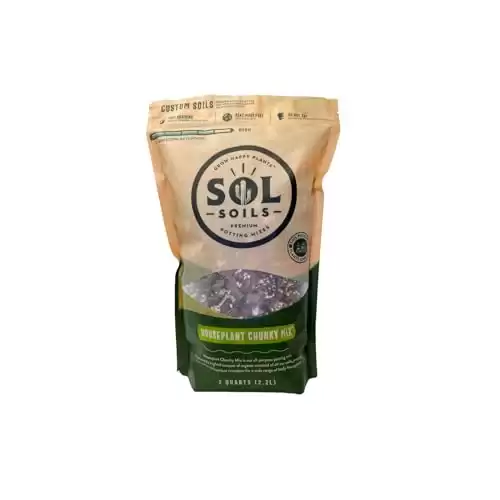Introduction
Hotel lobbies throughout the world use the graceful, striking and exotic blooms of orchids together with thick, shiny, green foliage to greet their customers. Orchids are stunning indoor plants adding an exotic touch and demanding to be a center piece in any indoor space. They come in a multitude of shapes, sizes and colors, and are grown for their bold and usually long-lasting flowers.
Only the best pots for orchids will ensure these graceful indoor companions are not only supported in terms of their growth but presented in with the flair they deserve.
So, what are the best pots for orchids? Creating a comfortable home for your orchid is one thing, but also selecting a pot that complements its magnificent blooms and foliage, and shows off your individual decorating flair can be a challenge.
Pots are an important foundation for great orchid growth. Whether you are repotting or searching for the perfect addition to your indoor decor, here is everything you need to know about orchid pots.
Read on to learn which pots make the best posts for orchids.
A quick introduction to orchids
Orchids have special needs and require different types of pots, potting mixes and care when compared with typical indoor plants.
To really understand the differences between orchids and typical plants, we need to explore how orchids grow in the wild.
Ok, stay with me here….
- Think of a lush green tropical jungle with massive rainforest trees and a canopy high above our heads.
- Now imagine an afternoon thunderstorm peppering the canopy with rain drops that then trickle down the trunks of these massive rainforest trees.
- Imagine the humidity of the air.
Now, let’s find the orchids in this environment.
Orchids are epiphytes aka ‘air plants’ and live on the surface of other plants, trees or rocks in their native jungle-like environments. These tenacious growers cling to the trunks and branches of trees gathering moisture and nutrients from the air, rain, and fragments of organic matter that accumulate around their roots.
Therefore, the best growing environments and therefore the best pots for orchids mimic these conditions – moist environments yet well-drained while encouraging air to easily flow around the roots and travel in and out of the pot.
Phalaenopsis - a beginner’s orchid
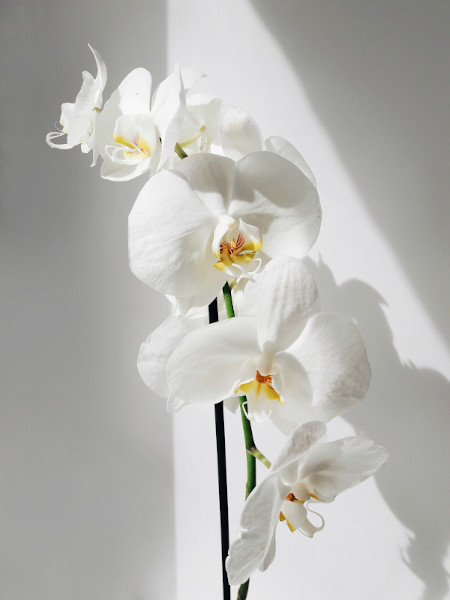
The Phalaenopsis or Moth Orchid is the most common orchid grown by indoor gardeners. They are often considered a beginner’s orchid because they do very well as indoor plants – growing and flowering in a moderately bright position without the requirement of extreme humidity. Better yet, they don’t need a huge amount of fiddly care!
A healthy Phalaenopsis will grow one or two new leaves each year. Then, after the growth phase has finished for the year, a bloom spike will emerge on the stalk beneath the second or third leaf from the top. The blooms can last for many months.
Once your Phalaenopsis has finished blooming, it will then focus on growing new roots and leaves in preparation for the next blooming season.
Phalaenopsis need to be repotted yearly, ideally after they have finished blooming.
Phalaenopsis need a moist but very well drained environment. So, must always be kept in a pot with ample air holes and good drainage.
The basic care requirements for a Phalaenopsis orchid are:
- Moderately bright position (window sill or similar spot), but not in direct sunlight.
- Watering when it begins to dry out, usually every 7 to 10 days.
- Fertilizing with a fertilizer specially formulated for orchids.
- Repotting when the bloom is finished with specially formulated orchid potting mix.

Phalaenopsis need a drop in temperature to trigger the growth of bloom spikes. For indoor gardeners, after your orchid has finished blooming, move it to a position where the temperature is cooler (both during the day and night) for approximately 2 weeks to help it initiate bloom spikes.
Growing orchids
Most indoor orchids grow well in a container such as a pot or hanging basket with a good quality, specially formulated orchid potting mix made from composted bark.
Orchids do not grow in soil. In fact, if you plant an indoor orchid in an all-purpose potting soil, the orchid will suffocate because the soil cannot provide the required airflow to the roots for the plant to survive and grow.
Keep your indoor orchids healthy with the following care:
- Water occasionally, maintaining a moist but not soggy potting mix.
- Fertilize with a specially formulated orchid plant food when the orchid is actively growing (usually in the warmer months).
- Regularly remove discoloured leaves.
- Repot yearly when the orchid has finished blooming.
Best pots for orchids: features to look for?
The best pots to orchids have one main difference when compared to those used for typical indoor plants – the holes in the pot. Orchid pots have larger holes and more of them, both in the bottom and sides of the pot, to ensure better drainage and increased air flow to the roots.
Drainage
Drainage, drainage and more drainage! Those extra holes in orchid pots are specially designed to ensure more drainage than normal pots.
When orchids are watered, any excess water needs to be able to freely flow through the orchid potting mix and out of the pot. It may seem like the water is flowing out of the container faster than the roots could absorb it, but that is what we want from a good orchid pot.
Orchids and many other indoor plants are often killed by overwatering. A quick-draining pot helps prevent over enthusiastic indoor gardeners from killing their orchid with kindness.
Air flow
Remember, most orchids grown indoors are naturally found on trees and high up in the rainforest. They have adapted to having their roots exposed to light and air. So, in addition to water, orchid roots need air.
The best pots for orchids have many small drainage holes in the bottom but also have holes on the sides of the pot. The holes on the sides of the pot encourage the movement of air around the orchid’s roots.
This movement of air in and around an orchid’s roots in a pot, mimics the wind and breezes that would normally flow in nature.
Holes on the side of the pot are not essential to good orchid growth, but if you are looking for the best pots for orchids, they are a fundamental feature.
Materials
Orchid pots can be made out of many different materials – terracotta, ceramic, mesh, plastic and even metal. Finding the best pots for orchids can be overwhelming because there is a huge selection of pots to choose from.
With plenty of variety, the good news is that there is a pot that can meet any indoor gardener’s budget.
As long as the pot has ample holes for drainage and air flow, it is likely to be a good pot for growing orchids. There are some advantages to different types of materials.
Read on for some tips on the most popular materials.
Terracotta
Terracotta is extremely porous and is very efficient at allowing air and water to pass through the walls of these clay-like pots. Thus, preventing overwatering.
Terracotta pots look good in most indoor settings and have the advantage of being heavier than other materials – hence providing a solid foundation for your orchid and its blooms.

Watch out for terracotta pots that have been sealed on the inside because this prevents the free flow of air and water through the walls of the pot. Check out our Helpful Tip for how to work around this.
Ceramic
Available in a myriad of shapes and colors, ceramic pots make stylish additions to any room. Again, being slightly heavier than other materials (like plastic) means ceramic pots provide a solid foundation for your indoor orchid.

Watch out for ceramic pots that don’t have ample drainage holes. These won’t allow for enough drainage and air flow. Check out our Helpful Tip for how to work around this.
Mesh
Mesh pots, often made from woven plastics or natural fibers, most closely mimic the natural environments of orchids. These pots or baskets hold the orchid roots and potting mix, allowing air to easily flow in and around the roots and water to easily drain out of the pot. Watch out though, these types of pots can dry out quickly so are best suited to humid environments and the attentive indoor gardener.
Here are some examples:
Plastic
Some indoor gardeners will turn their noses up at the mere thought of using plastic pots. Whereas historically plastic pots were boring and unstylish, more modern plastic pots are lightweight and come in a vast array of colors, sizes and shapes.
Nearly indestructible and inexpensive, plastic orchid pots are also significantly lighter in weight than terracotta and ceramic pots. Their light weight construction makes them a great choice in a hanging arrangement.
When choosing a plastic orchid pot, the same rules for drainage and air flow apply. Be sure to remember to select one that has a large number of holes in the sides and bottom of the pot.
Clear plastic pots are extremely popular with beginner indoor orchid gardeners. These types of pots are especially helpful if you are prone to overwatering your orchid. A clear plastic pot makes it easy to inspect the potting mix and check if it is moist before watering again.
Size
Orchids like growing in situations that are a little bit squeezy. Afterall, they are used to hanging off the side of trees and making do with cramped spaces.
When looking for a new pot for your orchid, choose a pot that is just slightly wider than the previous pot – essentially the size of the root ball of your orchid.
If you choose a pot that is too large, you will likely fill the excess space with additional potting mix which will in turn increase the likelihood that the orchid root system will be too moist.
Unlike trying to find the best pots for typical indoor plants, remember if you are looking for the best pots for orchids, think squeezy.
Function versus flair
So, your orchid pot needs fulfil a number of functions:
- Providing a stable and solid foundation for your orchid and its blooms
- Drainage – ensuring any excess water is able to freely flow through the orchid potting mix and out of the pot
- Air flow – encouraging the movement of air in and around the orchid’s roots.
But that doesn’t mean it has to be boring. Far from it!
Orchids are stunning, exotic and deserve to be the center of attention in any indoor setting. Whether you choose a simple, plain, white pot or a master piece that enhances the beauty of your orchid, this is your opportunity to show off your creative flair.

Oh no! The perfect pot to enhance your indoor orchid has no drainage holes. Don’t despair, plant your orchid in a simple plastic pot and place the plastic pot inside this pot. Just remember, when watering, remove the inner orchid pot, water, allow the excess water to drain and then place it back inside your perfect pot.
Here are some ideas:
Geometric Shaped Pots
Repotting an indoor orchid
It is best to repot orchids every year after they have finished blooming. This is needed because the orchid potting mix gradually breaks down over time, preventing it from adequately supporting the orchid’s needs.
Repotting an orchid is easy and only takes a couple of minutes, but it is a slightly different process to repotting a typical indoor plant.
Here are the quick steps:
- Start by using pruners to cut off flower stem at the base of the plant.
- Remove the plant from the pot. The easiest way is to upend the plant and gently tug on the stem of the plant.
- Now, tease out the root ball If the roots are tightly packed together. Gently loosen them and spread them out.
- Trim away any dead or damaged roots. Healthy orchid roots are firm and while dead roots are mere shells or soft to the touch.
- Brush away any old potting mix from the root ball.
- Fill the new pot halfway with a specially formulated orchid potting mix.
- Now, place the orchid in the pot, adjust its position to ensure it is level and centred in the pot.
- Gently add more potting mix to fill the pot and gently pack the potting mix around the roots.
- Water the plant well.
Not sure which indoor plant tools you might need or how to use them? For information on the best indoor gardening tools, check out our article.
General orchid care
Want to know more about caring for your indoor orchid. Check out this YouTube video by Garden Answer.
Final thoughts
So, what are the best pots for orchids?
The answer is that two pots are better than one. A decorative outer pot that suits the décor of your indoor environment and a clear plastic orchid pot to place inside the decorative pot.
The clear plastic orchid pot is affordable, easy to purchase and helpful for beginners.
The exterior pot can be styled to suit your home and readily changed from season to season – perfect!
Make sure you hang around and check out our other indoor gardening blog posts.
Remember, life is better with indoor plants!
Credits: Main photo by John Wiesenfeld on Unsplash


